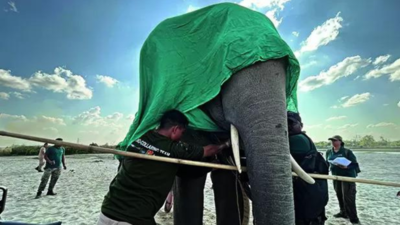GUWAHATI: Towering silhouettes emerge from the edge of the Bhutanese foothills along the northern bank of Brahmaputra in Assam, where dense forests meet sprawling paddy fields. The tranquility of night is shattered by rumbling trumpets of a herd of 80 wild elephants - led by a matriarch and a tusker, its ivory glinting in the moonlight. As the herd moves into the fields, the landscape transforms into a scene of organised chaos.
The golden paddy stalks, heavy with ripened grain, snap under the weight of massive feet. Some elephants use their trunks to pluck the stalks, munching noisily, while others roll in the mud-lined fields, enjoying the cool respite. Villagers, frozen in fear and awe, scramble to alert others.
Children are whisked away to safety. Shouts ring through the air as people bang metal utensils and light torches, hoping to steer the herd back toward the forest. The elephants remain undeterred, focused on their feast.
They eventually begin to retreat, their colossal forms blending into the greenery as suddenly as they appeared. As the herd vanishes, the fields are left flattened. Villagers lament the destruction of their hard-earned harvest.
Such raids repeat often in Udalguri, Baksa and Tamulpur. Wild elephants descend from the hills of Bhutan, consume paddy crops and in some cases, claim human lives. It is a reminder of the fragile balance between humans and wildlife, as elephant herds continue their centuries-old migratory patterns.
So, who will bell the elepha.


















